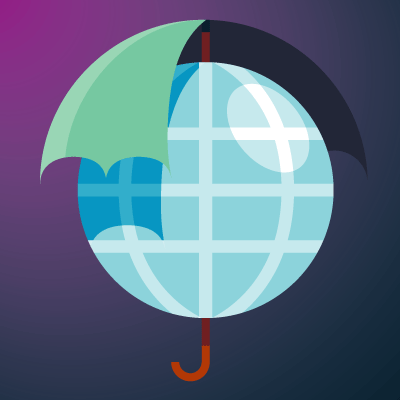
First in a series of blogs on Resilience and the Protection Gap
The year 2018 proved to be another year of heavy catastrophe losses from across the globe, this time from a series of medium-sized events, in terms of economic loss. The trend of hurricane-related flooding in the United States continued into its second year, with Florence unleashing record levels of rainfall measured in feet. The U.S. also experienced a second consecutive year of deadly and destructive California wildfires, which may signal a new normal in wildfire activity.
Outside the U.S., significant events included earthquakes, floods, and typhoons in Japan as well as European windstorms. According to Swiss Re’s preliminary sigma estimates, total reported economic losses from natural catastrophes approached USD 150 billion, with 11,000 fatalities and missing persons. Although economic losses were lower than 2017’s reported USD 350 billion, the values stand almost double that of paid insurance claims which equated to USD 79 billion. This is a figure that is in line with AIR’s long-term average annual loss (AAL) as outlined in our “2018 Global Modeled Catastrophe Losses.”
AIR’s report highlights the protection gap issues around the world, a trend that we see year on year, and 2018 proved no different. Through our worldwide suite of catastrophe (CAT) models, AIR is working to provide the tools needed to measure the risk, an important step to ultimately manage and mitigate.
Measure - Manage - Mitigate
A generation of risk managers have used CAT models to make the insurance and reinsurance industry more resilient and better able to weather the losses that occur every year. Today, governments and aid organizations are beginning to follow this example. Through investing in risk management, the economic burden that so often falls on the shoulders of governments, businesses, and individuals can be shared with insurers and capital markets.
AIR has been at the forefront of these initiatives. The Pacific Catastrophe Risk Assessment and Financing Initiative (PCRAFI) perfectly highlights the benefits that come with using catastrophe models to aid risk transfer as a form of resilience. In this instance the World Bank used AIR models to understand the hazard and risks that 15 island nations face. This data was then used to facilitate a parametric-based insurance product that pays out based on hazard experienced rather than the loss.
This instrument has the advantage of a speedy payout, a quick injection of finance that can be used to help those in need in the immediate aftermath of an event. Other initiatives include the Pacific Alliance and CCRIF. AIR’s partnership with 100 Resilient Cities and other projects allow governments to understand and assess the risk of natural catastrophes.
Through using catastrophe models we can measure the risk posed by natural and man-made perils, which is a key piece of the resilience puzzle. In this series of blogs we will go into more detail and cover some of the innovative mitigation measures that are out there today as well as some of the solutions that we could see in the future.
Want to know more about CAT Models? Check out our CAT model explainer video



